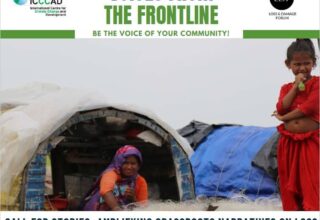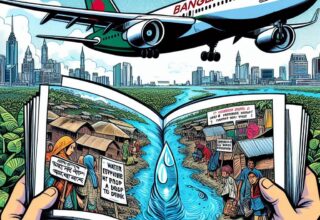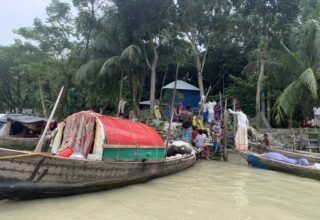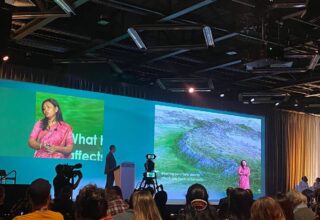On 9 August 2021, the science working group of the Intergovernmental Panel on Climate Change (IPCC) report showed that greenhouse gas emissions from human activities are responsible for approximately 1.1°C of warming since 1850-1900. Climate change is not just what is happening now and will happen in the future but also what has been happening for over a century. Today we are dealing with the loss and damage caused by this historical warming.
Loss and damage is generally used to refer to the environmental deterioration that can be scientifically attributed to the increase in global temperatures of at least 1 degrees Celsius due to greenhouse gas emissions since the industrial revolution. In 2013, COP19 established the Warsaw International Loss and Damage Mechanism; ahead of COP26 in Glasgow last year, the most vulnerable developing countries made it clear that they expected the conference to make further progress on the issue. Developing countries jointly proposed the creation of the Glasgow Facility for Financing Loss and Damage following a call by Prime Minister of Bangladesh Sheikh Hasina, who chairs the group of the over 50 most vulnerable countries known as the Climate Vulnerable Forum, for a “Glasgow Climate Emergency Agreement”.
After two weeks of intensive negotiations, a group of developed countries, led by the United States and the COP26 Presidency, ignored these demands, insisting on naming the outcomes document the “Glasgow Climate Agreement”, leaving out “emergency”. They also downgraded the demand for the creation of the Glasgow Facility for Financing Loss and Damage to a Glasgow Dialogue on Finance for Loss and Damage – a dialogue that will delay any action by at least another two years. The summit also failed to result in any new funding for loss and damage.
COP26 did lead to positive outcomes on loss and damage. These include the creation of the Santiago Network on Loss and Damage, although this is a technical body without the ability to address the reality of loss and damage on the ground. The Glasgow Dialogue on Financing Loss and Damage will at least allow formal discussions on the topic to continue, although it is worth recalling that the Glasgow Dialogue would not be the first talks of this nature. A previous round of talks held under the United Nations Framework Convention on Climate Change (UNFCCC), known as the Suva Dialogue, did not reach any significant conclusions.
Perhaps the most important outcome from Glasgow did not even take place within COP26. Scotland’s First Minister, Nicola Sturgeon, announced the creation of a new Loss and Damage Fund, pledged GBP 1 million and challenged others to contribute. By the end of the COP, she had doubled Scotland’s contribution and received a EUR 1 million contribution from the province of Wallonia in Belgium as well as several millions of dollars from philanthropic foundations.
So even though developed countries succeeded in blocking the creation of a loss and damage fund under the UNFCCC, a fund now exists outside the UNFCCC to address loss and damage rather than to talk endlessly about doing so. As we look ahead to COP27 in Egypt in November 2022, under an African COP president, this might prove significant when vulnerable developing countries once again push for an adequate response to the realities of loss and damage.
Victims of the adverse impacts of human-induced climate change are already paying the price, in poor and rich countries alike. Governments will need to address this cost on top of their efforts to deal with climate-related hazards. At the global level, the burden of helping victims to pick up the pieces after extreme weather events will inevitably fall on humanitarian actors and funders. A challenge for the UNFCCC will be to persuade developed countries to provide financial support for dealing with loss and damage not wholly attributable to extreme weather events but most certainly exacerbated by global warming.
We saw just before COP26 that climate events are no longer concentrated in poorer parts of the world: flash floods in Germany claimed over a hundred lives, while more than fifty lives were lost to floods due to hurricane Ida in the United States. The respective heads of government acknowledged that human-induced global warming had increased the severity of these events and allocated many millions of euros and dollars to compensate the victims for the loss and damage that they had suffered. For how long must the idea of international compensation for the victims of climate change remain beyond the realm of possibility?
Originally this Blog was published on January 25, 2022 at OECD-Development Matters.
About the author
Saleemul Huq, Director, International Centre for Climate Change and Development, Independent University Bangladesh.







